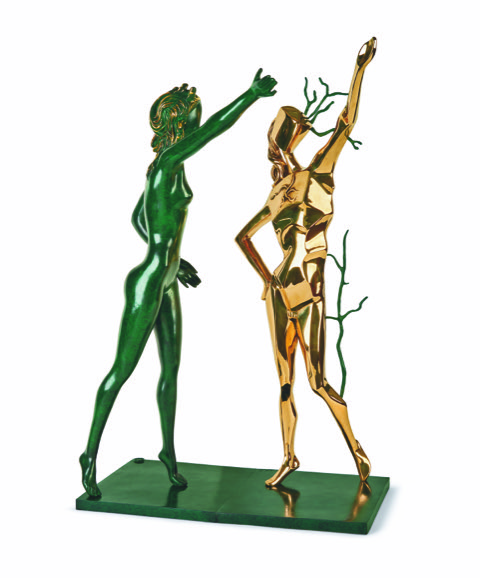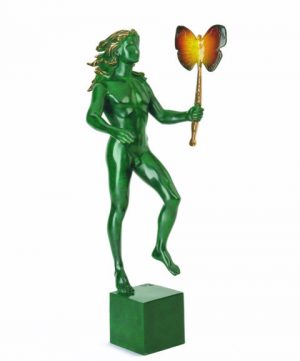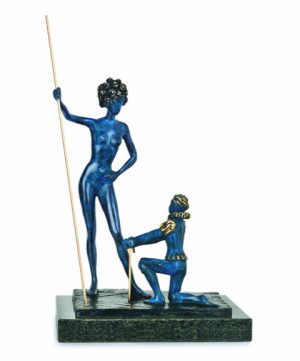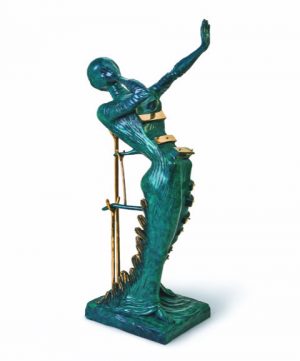Terpsichore is one of the nine muses in Greek mythology; she was the goddess of dance and chorus. In his representation of Terpsichore, Salvador Dalí uses a reflected image, setting the soft, carnal muse against her “shadow”, the hardened, statuesque one. The elegant, sensuous figure of Terpsichore morphs into a geometrical body with sprouting branches.
The two dancing figures make a striking composition, juxtaposing the classical with the cubist. Dalí profoundly admired and respected Classicism and was also familiar with the techniques of Cubism pioneered by his contemporary Pablo Picasso. As a young artist, Dalí had his own Cubist phase during the 1920’s which is reflected in several of his paintings, notably Cubist Self Portrait (1923). The dancer with the smooth and classical form represents Grace and the subconscious. The other angular, abstract figure represents the ever-growing and chaotic rhythm of modern life.
Dalinian elements are visible in the sculpture: figures without facial features underlining their purely symbolic significance, the branches symbolizing regeneration and new life.
Dalí’s Homage to Terpsichore is an exquisite tribute to the goddess of dance.
Date: conceived in 1977, first cast in 1984
Material: bronze
Technique: lost wax process
Edition size : 350 + 35 EA
Height : 70,5 cm
Edition : patina green
Maquette: original drawing, Homage to Terpsichore, 1977
Direct intervention (created by Dalí): the idea, image, and original maquette
Indirect intervention (created by artisans): lost wax process and patina






